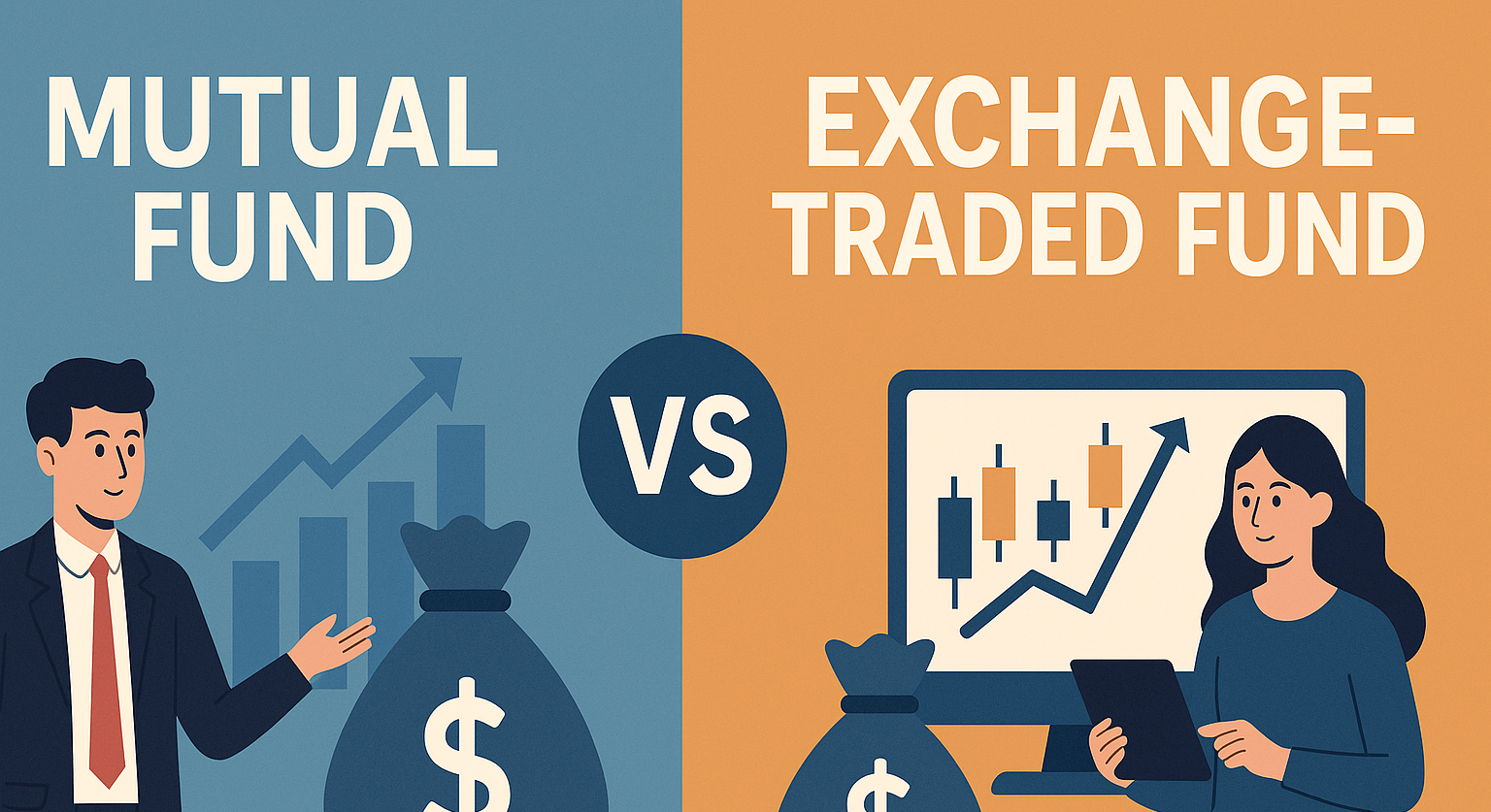Mutual Funds (MFs) and Exchange-Traded Funds (ETFs) are both popular investment vehicles in India, each with distinct characteristics. While both aim to provide investors with diversified exposure to various asset classes, they differ in structure, management style, cost, and trading mechanisms.
1. Structure and Management
- Mutual Funds (MFs): Managed by Asset Management Companies (AMCs), MFs pool money from investors to invest in a diversified portfolio of stocks, bonds, or other securities. They are actively or passively managed, with fund managers making investment decisions based on research and market analysis.
- Exchange-Traded Funds (ETFs): ETFs are similar to index funds but trade on stock exchanges like individual stocks. They typically aim to replicate the performance of a specific index, such as the Nifty 50 or S&P 500, by holding the same securities in the same proportions.
2. Trading and Liquidity
- MFs: Bought and sold at the end-of-day Net Asset Value (NAV). Transactions are processed once a day after the market closes.
- ETFs: Traded throughout the trading day on stock exchanges, offering real-time pricing and liquidity. Investors can buy or sell ETF units at market prices during trading hours.
3. Cost Structure
- MFs: Generally have higher expense ratios, especially actively managed funds, due to management fees and administrative costs.
- ETFs: Typically have lower expense ratios, as they are passively managed and incur fewer operational costs. However, investors may incur brokerage fees when buying or selling ETF units.
4. Investment Strategy
- MFs: Offer a range of strategies, including actively managed funds aiming to outperform the market and passively managed funds tracking indices.Arthgyaan
- ETFs: Primarily passively managed, aiming to replicate the performance of a specific index. Some actively managed ETFs are also available but are less common.
5. Taxation
- MFs: Taxation depends on the holding period. Short-term capital gains (STCG) are taxed at 20%, while long-term capital gains (LTCG) exceeding ₹1.25 lakh in a financial year are taxed at 12.5% without indexation.
- ETFs: Taxed similarly to MFs, with STCG and LTCG rates applicable based on the holding period.
6. Accessibility and Minimum Investment
- MFs: Investors can start with a Systematic Investment Plan (SIP) of as low as ₹100, making them accessible to a wide range of investors.
- ETFs: Require a Demat and trading account, and investors need to buy at least one unit of the ETF, which may be priced higher than the minimum SIP amount.
7. Performance and Returns
- MFs: Performance varies based on the fund manager’s skill and market conditions. Actively managed funds may outperform the market but also carry higher risk.
- ETFs: Typically aim to match the performance of the underlying index, offering consistent returns in line with the market.
Conclusion
Both Mutual Funds and ETFs have their advantages and are suitable for different types of investors. MFs may be preferable for those seeking professional management and willing to pay higher fees, while ETFs are suitable for cost-conscious investors looking for passive exposure to the market. Understanding the differences can help investors choose the right investment vehicle based on their financial goals and risk tolerance.




